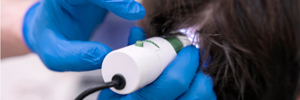
Hair loss can be a frustrating experience for both men and women. It can affect self-esteem and confidence, making people feel less attractive and sometimes even leading to anxiety and depression. Many treatments are available to address hair loss, but one that has gained popularity in recent years is the PRP for hair. PRP, which stands for Platelet-Rich Plasma, involves injecting platelet-rich plasma into the scalp to promote hair growth. But does it really work? Let’s take a closer look at PRP for hair London.
What is PRP therapy for hair?
A therapy in PRP for hair Londonis a non-surgical treatment that involves extracting a small amount of blood from the patient’s arm and processing it in a centrifuge to separate the plasma, which is rich in platelets, from the other components. The resulting platelet-rich plasma is then injected into the scalp, where it is believed to stimulate hair growth by increasing blood flow and delivering growth factors to the hair follicles skin.
Does PRP therapy work for hair loss?
While PRP for hair London has gained popularity in recent years, there is still some debate over its effectiveness in treating hair loss. PRP therapy for hair loss works by using the patient’s own blood to promote hair growth. Here’s how it works:
- Blood is drawn:
A small amount of the patient’s blood is drawn from their arm, usually around 10-20 milliliters.
- Blood is processed:
The blood is then placed in a centrifuge, which spins it at high speeds to separate the platelet-rich plasma from the other components of the blood.
- Platelet-rich plasma is extracted:
The platelet-rich plasma, which is rich in growth factors and other nutrients that promote healing, is then extracted and prepared for injection.
- PRP is injected:
The PRP is then injected into the scalp, usually in the areas where the patient is experiencing hair loss. The injections are typically done with a fine needle and are relatively painless.
- Healing and hair growth:
The growth factors and nutrients in the PRP stimulate the hair follicles, promoting healing and hair growth. This can result in thicker, fuller hair over time.
The mechanism of PRP for hair London is believed to be that the growth factors in the PRP stimulate the production of new blood vessels, which in turn promote hair growth. Additionally, the growth factors may also stimulate the activity of hair follicle cells, leading to increased hair growth and thickness.
What are the risks and side effects of PRP therapy for hair?
PRP for hair London is generally considered safe, as it involves using the patient’s own blood and does not require any incisions or anesthesia. However, like any medical procedure, it does carry some risks and side effects. These may include:
- Pain, swelling, or bruising at the injection site
- Infection
- Scarring
- Headache
- Nausea
- Dizziness
It is important to discuss the risks and benefits of PRP therapy with a qualified healthcare provider before undergoing treatment.
Conclusion
PRP for hair in Londonhas gained popularity in recent years, but its effectiveness is still a matter of debate. While some studies have shown promising results, others have found little to no benefit. It is important to carefully consider the risks and benefits of PRP therapy and discuss them with a qualified healthcare provider before undergoing treatment. Contact DSL Clinic for the best treatment in PRP for hair in London.
